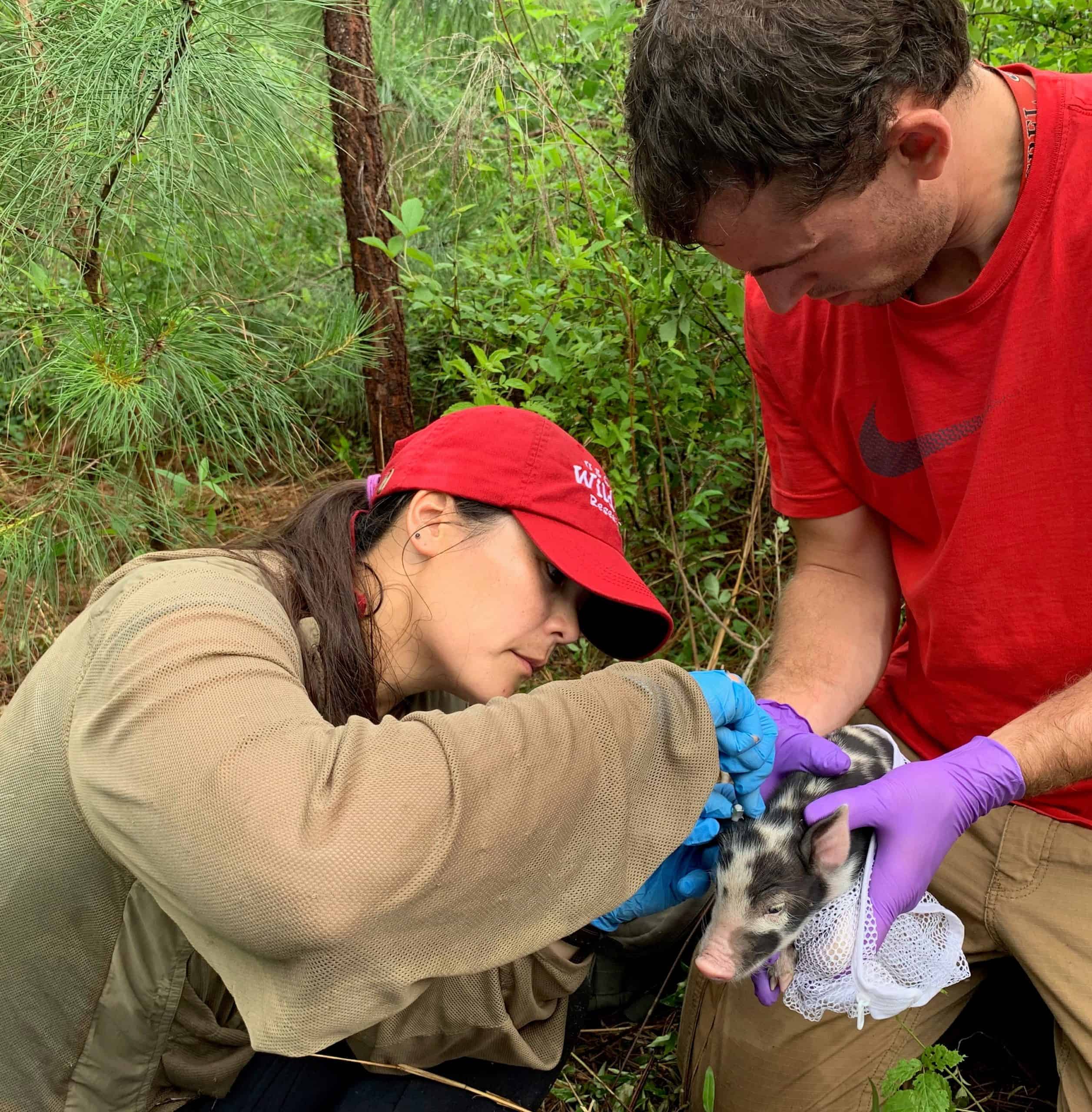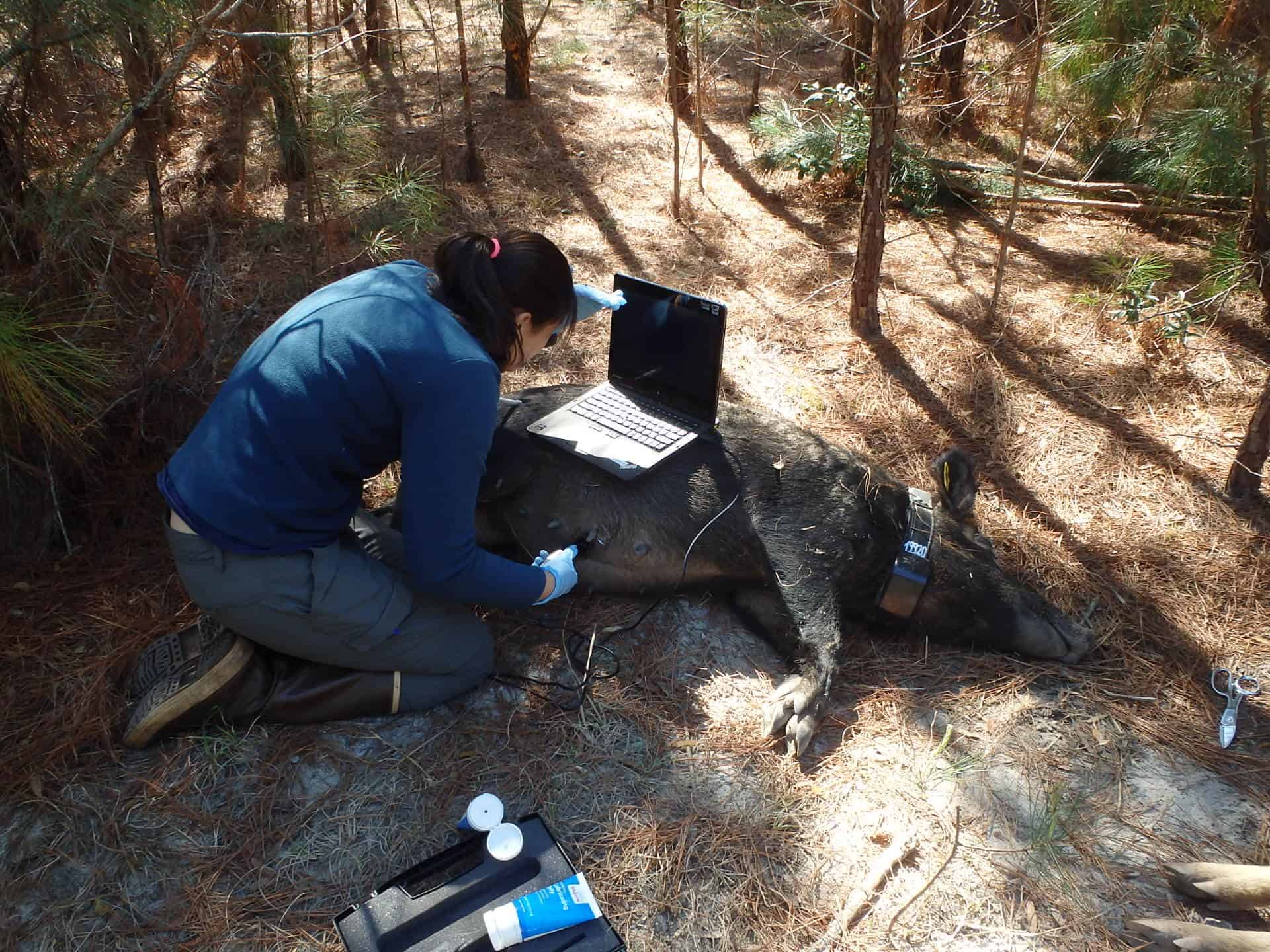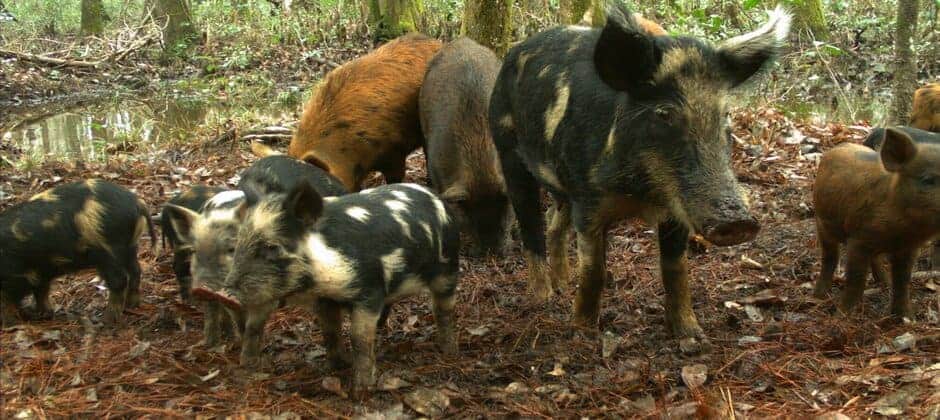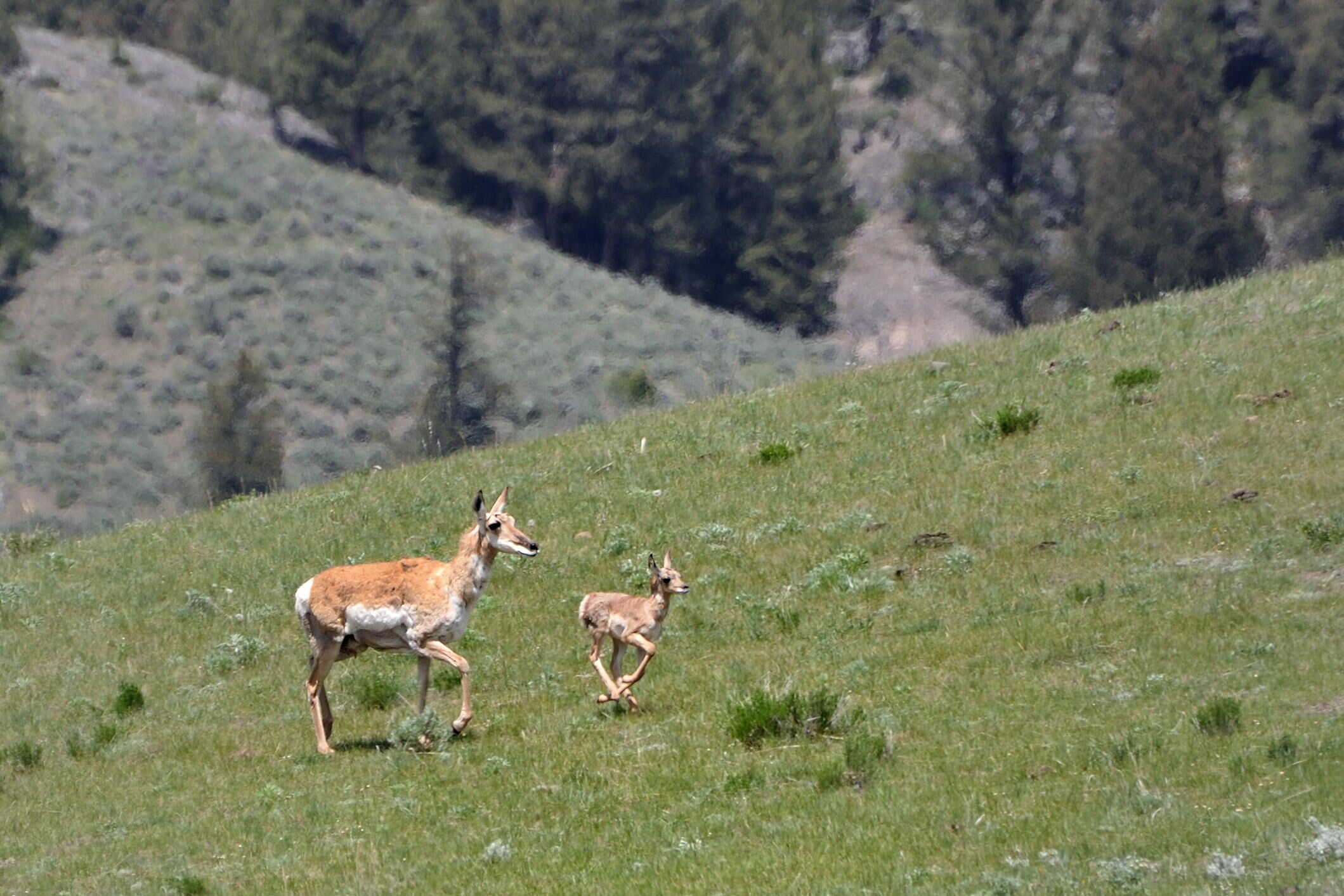Share this article
JWM: Size contributes most to wild pig reproduction success
Wild pigs are an invasive species that doesn’t really have a native range in the world, given that they are mostly a cross between Eurasian boars and domestic pig breeds. Farmers have purposely bred the latter for centuries to give birth more often, and to larger litters of piglets, than their wild ancestors. While this may be a good trait for captive domestic pigs used in the pork industry, the high reproductive output of these pigs exacerbates efforts to control the spread of wild pigs—the result of hybridization of Eurasian wild boar and domestic pigs or feral pigs over time—and the damage they cause to crops, infrastructure and native ecosystems in North America.
Sarah Chinn and her colleagues wanted to learn more about the patterns and level of wild pig (Sus scrofa) reproduction. As part of her PhD work at the Savannah River Ecology Laboratory at the University of Georgia, Chinn conducted field necropsies of 514 wild pigs culled as part of management efforts led by the U.S. Forest Service in South Carolina from March 2017 to May 2020.
“That is no small feat to do in the heat of South Carolina,” said Chinn, currently a contractor for the U.S. Fish and Wildlife Service. “We don’t have a laboratory—everything is done in the field.”
For a study published recently in the Journal of Wildlife Management, the team focused on 159 pregnant sows of the 514 field necropsies they performed. They analyzed how age, size, number of teats and nutritional condition related to factors like litter size and probability of pregnancy. They also analyzed the wild pigs’ DNA to determine what percentage each one had of Eurasian boar genes versus those of domestic pigs.

Chinn tags a wild piglet with Cody Tisdale. Credit: Sean Bogle
The researchers found that the oldest pigs tended to have larger litter sizes. Analysis of the 864 fetuses they found in the pregnant sows showed that overall, the average litter size was 5.4 piglets—a number larger than that of wild Eurasian boars but smaller than that of domestic pigs. Adult sows, or those older than three years, had had the largest litter sizes compared to all other age classes, and were more likely to be pregnant compared to subadults, which range from 1.5 to three years old.
Hormone analysis revealed that even juveniles, which are classified as younger than one year old, can reproduce, though. The threshold seems to be around 30 kilograms in weight, at which point the sows began producing elevated concentrations of estradiol and progesterone—reproductive hormones.
“Right around 30 kilograms is this mass threshold a female needs to become sexually mature,” Chinn said.
Genetic makeup
DNA analysis revealed that on average, these wild pigs had 23% wild boar ancestry, though that ranged between 6% and 60.5% in their study animals. The researchers didn’t see any differences in reproduction—either probability of pregnancy or litter size—between sows that had a larger percentage of wild boar DNA and those with a lower percentage.
The researchers found pregnant sows all year, though they did see a few peak periods when more of the animals they necropsied were pregnant, on average. “That’s what makes them really good invasive species,” Chinn said. “They can breed year-round.”
More pregnancies occurred from February to April, and between November and December. Chinn and her colleagues predicted an average conception time, and found that the peak period tracked closely to the times when there are more acorns on the ground—an important food source for feral pigs. The highest number of births were seen between March and June, coinciding with peak conception between November and February, when the most acorns are available.
“If it’s a really good food year, females can get pregnant when they are younger,” Chinn said.

Sarah Chinn conducts an ultrasound on a female wild pig. Credit: Rie Saito
Perhaps surprisingly, the researchers found that while older pigs had a higher probability of being pregnant, this wasn’t true for larger pigs. Chinn speculated that this may not be so much of a cause at play as an effect, since producing milk for piglets is more taxing on pregnant female’s bodies. Sows that aren’t pregnant, on the other hand, retain more bulk from the food they eat.
“They’re in better condition because they don’t have piglets with them and they’re not lactating,” she said.
Chinn said this research can help wildlife managers improve their population models for the spread of these invasive pigs. “They are this really adaptable, plastic animals, and they can change their reproductive output based on environmental factors,” she said. “Every pig, once they hit about 30 kilograms, is contributing to population increase.”
This article features research that was published in a TWS peer-reviewed journal. Individual online access to all TWS journal articles is a benefit of membership. Join TWS now to read the latest in wildlife research.
Header Image: Researchers analyzed female feral pigs to determine their reproductive output. Credit: Sarah Chinn








